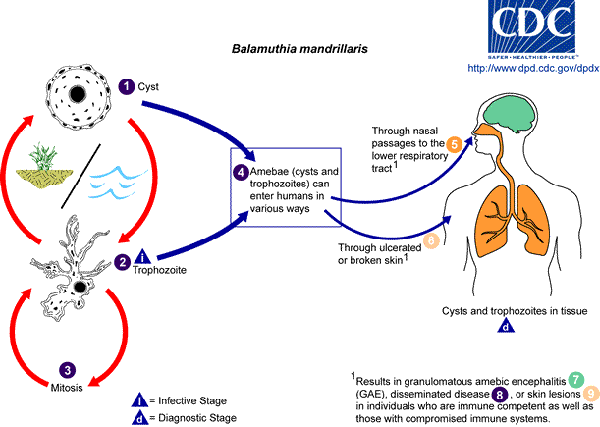Pathogen & Environment
Causal Agent
Balamuthia mandrillaris is a free-living ameba that is morphologically similar to Acanthamoeba in tissue sections viewed by light microscopy.
Life Cycle

Balamuthia mandrillaris has only recently been isolated from the environment and has also been isolated from autopsy specimens of infected humans and animals. B. mandrillaris has only two stages, cysts (1) and trophozoites (2), in its life cycle. No flagellated stage exists as part of the life cycle. The trophozoites replicate by mitosis (3). The trophozoites are the infective forms, although both cysts and trophozoites gain entry into the body (4) through various means. Entry can occur through the nasal passages to the lower respiratory tract (5), or ulcerated or broken skin (6). When B. mandrillaris enters the respiratory system or through the skin, it can invade the central nervous system by hematogenous dissemination causing granulomatous amebic encephalitis (GAE) (7), or disseminated disease (8), or skin lesions (9) in individuals who are immune competent as well as those with compromised immune systems. B. mandrillaris cysts and trophozoites are found in tissue.